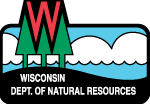The presentation began with Dr. Dein discussing the ecology of wildlife disease and why it is important to gather information about wildlife health events. He ended his portion of the program on the important contributions that public individuals have already made to further scientific knowledge through their participation in citizen science programs like eBird.
After the general information session, Megan demonstrated the Wildlife Health Event Reporter, an online observation reporting tool. Megan walked through how to report dead/sick/injured wild animals that attendees might come across in their daily lives, such as a dead squirrel on hike or a sick bird at the feeder in the backyard. Wildlife health event sightings like these – no matter how common or small – can offer critical clues to help researchers better understand the occurrence of wildlife disease.
The program ended with comments from Nancy Businga, a microbiologist from the Wisconsin Department of Natural Resources (WDNR) Wildlife Health Program. She provided real-life examples where public reports about sick or dead wildlife lead to the quick response to an outbreak of a common bird infection, avian salmonellosis, in 2008. The public reports and early collection of fresh carcasses enabled a quick diagnosis and response.
Currently, about 75 percent of emerging infectious diseases affecting people originate from contact with wildlife [1], such as SARS, avian influenza, and West Nile virus, leading to increasing concern about these issues worldwide. If you share this concern, we invite you to watch the video recording of the presentation to learn more about the significance of wildlife disease and how citizens can help natural resource managers, researchers, public health officials and others in their efforts to protect the well-being of all living things and promote a healthy ecosystem. Each report makes a difference. It adds to a greater body of wildlife disease knowledge that can potentially assist in the detection of common disease events and biosecurity concerns, provide information to explore the interconnections between human, domestic animal and wildlife diseases, and help build baseline knowledge on wildlife mortality.
This program is part of a multidisciplinary research study conducted with support from a grant awarded by the University of Wisconsin Global Health Institute.
The following study team members assisted in the development of this program:
USGS National Wildlife Health Center
- Dr. F. Joshua Dein – Veterinary Medical Officer
- Megan Hines- Technical Manager, School of Veterinary Medicine, WDIN
- Christy Browne-Nunez - Post-Doctoral Research Associate, Nelson Institute for Environmental Studies
- Cris Marsh, Content Manager, School of Veterinary Medicine, WDIN
- Bret Shaw- Assistant Professor, Department of Life Sciences Communication
_____________________________________________
[1] AM Ramos and K Synder. (2012). Pilot study establishes the importance of tracking diseases associated with illegal wildlife trade at US ports. American Museum of Natural History. Retrived August 2, 2012 from http://www.amnh.org/science/papers/pilot_study_2012.php








No comments:
Post a Comment